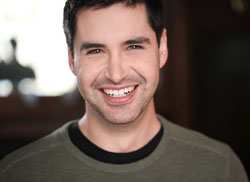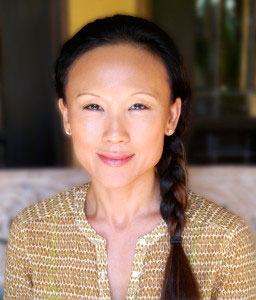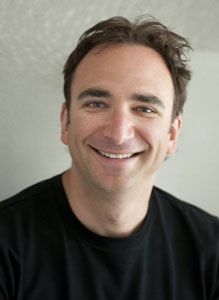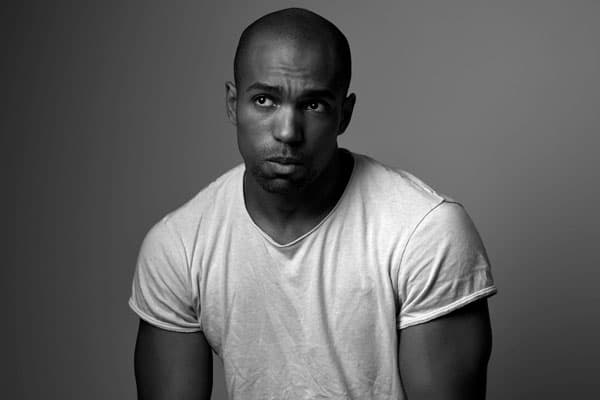
There is an age old debate in acting: Do you use your ‘self’—(your persona and background) to build a character —or is the character something outside of your experience that you create using your imagination and step into?
Both of these approaches can be limiting in their own way. The “imagination” route can sometimes result in representational acting — presenting an ‘idea of a character’ in a self-puppeting, superficial, self-conscious way. This creates hollow artifice, and even if very skilled, an audience can “feel” something deceptive about it — that there is nothing behind the curtain. On the other hand, the “I am the character” method can create limited performances — recycled mannerisms and easily accessed emotions and actions which carry over from character to character without actually serving the story of the play with specificity.
When I began training at Boston University, I definitely used my imagination as the foundation. I was a shy kid, and I saw acting as a way to use my imagination to communicate with others in ways I couldn’t in my real life. As a result, while I let my imagination and my ideas cover my outside like a collage my interior life was locked away safely. I took a certain pleasure in feeling like I was “putting it all out there” while still being safely sequestered inside myself. But very little of my rich imaginative life was translating externally. Instead, I was stiff and stilted onstage.
So I tried the opposite method—creating from ‘me’. It resulted in very safe, limited performances that were more a reflection of my limited self-awareness than anything else. These characters were free of artifice, and very boring. And my vocal work was cautious; I wanted to sound authentic, but I just ended up sounding flat. The restraint placed on me by trying not to violate truth resulted in as much stiffness as the imaginative method.
What integrated these two approaches for me was learning the Alexander Technique with Master teacher Betsy Polatin.
If you are unfamiliar, the Alexander Technique (A.T.) is a way of learning how to be fully connected to your body—to call it a ‘movement technique’ gives the wrong impression. Though it does improve the quality of your movement and posture, what is really about is making you more present. It does this by helping you to become aware of harmful habitual tensions that are working against your body’s natural design and giving you a method to release them. As these blocking tensions disappear, sensitivity to your emotions, mind, and body that you might not even have known were missing reappear. Betsy called this “stepping outside your habitual self.”
A.T. taught me to think of my ‘self’ not in limited terms, but as vast–I could encompass experiences that weren’t part of my personal biography by becoming awakened to the huge variety contained within my being. A new universe was opened up to me. Instead of being restricted to imagining things that “were or weren’t me,” I realized that characters could have emotions, perspectives, and ways of moving that weren’t so much foreign to me as they were unexplored. In addition, A.T. gave me more physical control, breath, poise, and allowed my internal work to shine through by making sure my habits weren’t muddling my ability to communicate.
A.T. helped in my personal life as well. I was able to be much more open, and to act in ways that surprised me.
It made such a difference in my life that I decided to spend three years and 1600 hours getting certified as a teacher. I now teach private lessons to all sorts of people (not just actors), and have an 8-week course for actors at Chicago’s Green Shirt Studio (www.greenshirtstudio.com).
As I have started working with Alexander Technique students of my own, I have come to think of it as helping people to work with an “expanded self”. Through this, my students can find an ease in their acting — less of a struggle and more of an unlocking. They don’t have to force themselves into their performances. They can just let go of their constraints and let the character come to them.
If you are looking for the missing link in your performance, I hope you will check out this transformative technique, and that it will make as much difference for you as it did for me.
For more information or to find an Alexander Technique Teacher in North America, visit www.amsatonline.org.
 Jeremy Cohn teaches the Alexander Technique privately out of his studio located in the Lincoln Square Neighborhood in Chicago, Freedom in Motion Alexander Technique. He also teaches group Alexander classes for actors at Green Shirt Studio in Uptown. Jeremy was first introduced to the Technique while earning his BFA in Acting from Boston University’s College of Fine Arts studying under Betsy Polatin, best-selling author of The Actor’s Secret. He has appeared as a professional actor with many Chicago and Boston theatre companies including the Tony Award winning Huntington Theatre Company and the Court Theatre Chicago. To learn more, visit: www.freedominmotionat.com or find Jeremy on Facebook at: https://www.facebook.com/freedominmotionat/.
Jeremy Cohn teaches the Alexander Technique privately out of his studio located in the Lincoln Square Neighborhood in Chicago, Freedom in Motion Alexander Technique. He also teaches group Alexander classes for actors at Green Shirt Studio in Uptown. Jeremy was first introduced to the Technique while earning his BFA in Acting from Boston University’s College of Fine Arts studying under Betsy Polatin, best-selling author of The Actor’s Secret. He has appeared as a professional actor with many Chicago and Boston theatre companies including the Tony Award winning Huntington Theatre Company and the Court Theatre Chicago. To learn more, visit: www.freedominmotionat.com or find Jeremy on Facebook at: https://www.facebook.com/freedominmotionat/.




